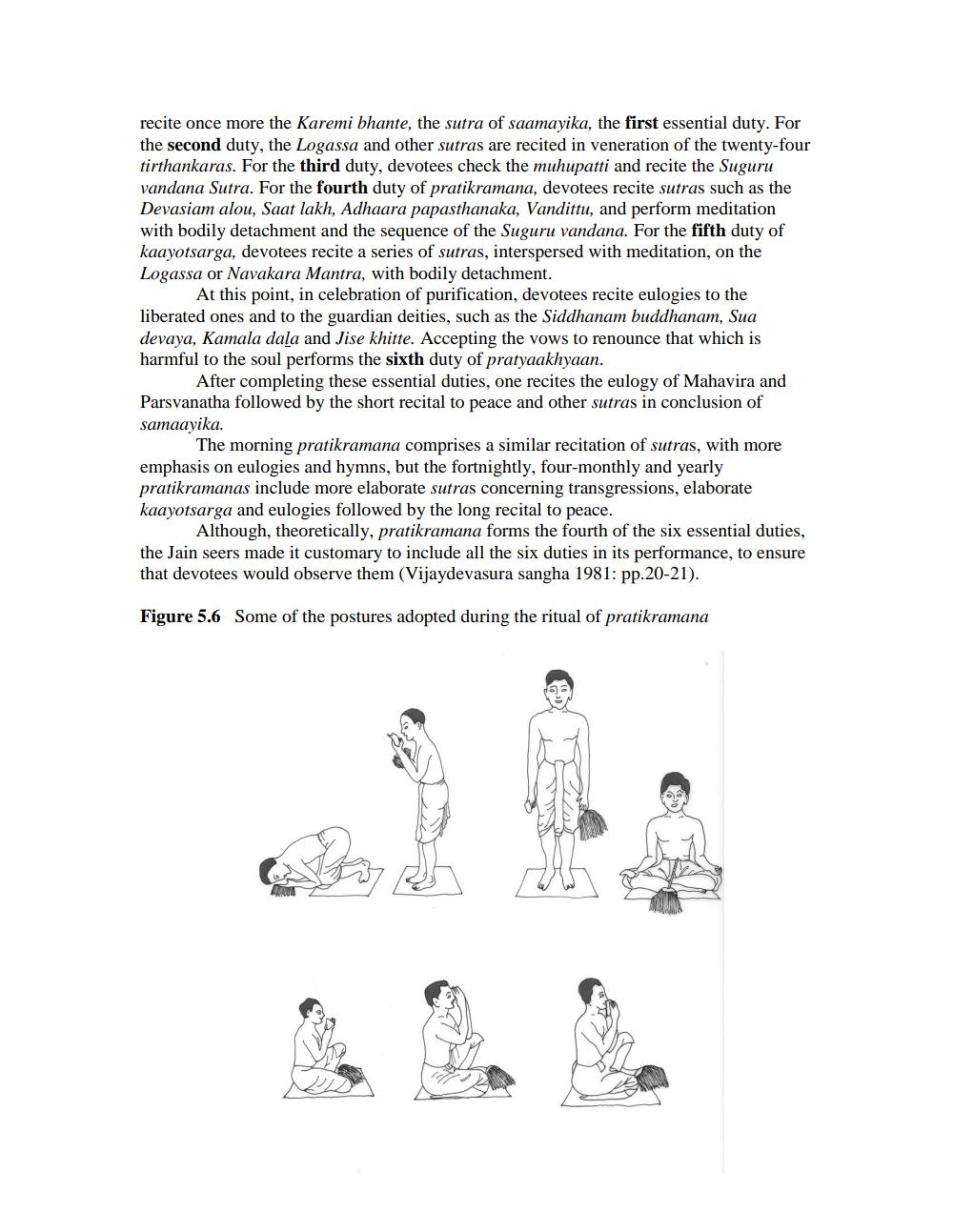________________
recite once more the Karemi bhante, the sutra of saamayika, the first essential duty. For the second duty, the Logassa and other sutras are recited in veneration of the twenty-four tirthankaras. For the third duty, devotees check the muhupatti and recite the Suguru vandana Sutra. For the fourth duty of pratikramana, devotees recite sutras such as the Devasiam alou, Saat lakh, Adhaara papasthanaka, Vandittu, and perform meditation with bodily detachment and the sequence of the Suguru vandana. For the fifth duty of kaayotsarga, devotees recite a series of sutras, interspersed with meditation, on the Logassa or Navakara Mantra, with bodily detachment.
At this point, in celebration of purification, devotees recite eulogies to the liberated ones and to the guardian deities, such as the Siddhanam buddhanam, Sua devaya, Kamala dala and Jise khitte. Accepting the vows to renounce that which is harmful to the soul performs the sixth duty of pratyaakhyaan.
After completing these essential duties, one recites the eulogy of Mahavira and Parsvanatha followed by the short recital to peace and other sutras in conclusion of samaayika.
The morning pratikramana comprises a similar recitation of sutras, with more emphasis on eulogies and hymns, but the fortnightly, four-monthly and yearly pratikramanas include more elaborate sutras concerning transgressions, elaborate kaayotsarga and eulogies followed by the long recital to peace.
Although, theoretically, pratikramana forms the fourth of the six essential duties, the Jain seers made it customary to include all the six duties in its performance, to ensure that devotees would observe them (Vijaydevasura sangha 1981: pp.20-21).
Figure 5.6 Some of the postures adopted during the ritual of pratikramana
砂




